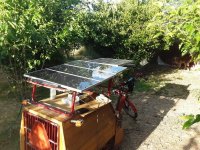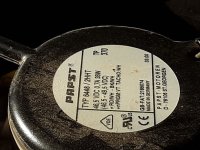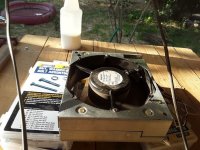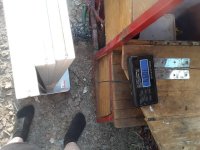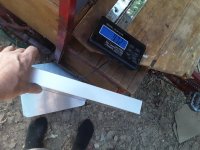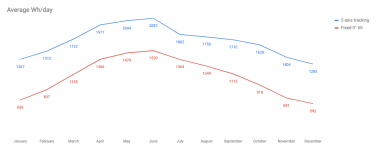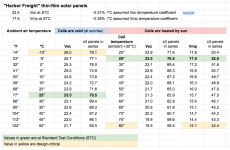Now *I* have a question; I know just enough to know it's possible, but not exactly how:
I picked up four PV panels at goodwill for about $33, my guess is they're worth about that, at best, but I missed out on the last ones I saw there, figured if I can't use these I can resell them. None are visibly cracked, etc. They do "work"; was already after sunset but light enough sky when I got home to test open-circuit voltage. By the time I got done feeding the dogs it was dark so I parked the trike under the new LED yard light, put the panels across the top of the canopy, and hooked them up in series to a 48vdc computer fan, but not enough power to run it, dropped to about 4v at the input to the fan. Was actually surprised they generated even that much power.
Three of them look like the ones I've seen in the "harbor freight" 3-panel 50w kit; each has it's diode box on the back with wires and ring terminals. All three labels are damaged/old, so I had to concatenate the info below from what I could read off of each of them, so stuff could be missing or wrong. Pics of all the labels are attached.
Maximum Power Pmax 15w +/-5w
Rated Voltage Vmp 17.5v
Rated Current Imp 0.86A
Open Circuit Voltage Voc 23.5v
Short Circuit Current Isc 1.15A
(unreadable) AM1.5.10000W/M2
The fourth is a Kyocera KC40T from 2006, it has diode in a box on the back and seems to also have a diode box on the panel:
At 47C (probably closer to what it would run at here in Phoenix, vs the 25C rating it also shows), it's a 30w panel, Vpmax 15.3v, Ipmax 1.97A, Voc and Isc are not given. 1000Wm2, AM1.5
At 25C it's a 43W panel, 17.4v, 2.48A, 21.7V, 2.65A. 800Wm2, AM1.5
Max system voltage 600v, series fuse 6A, mass 4.5kg
Now, the point is I'd *like* to run them all in series with an MPPT or whatever, that would let me connect them to the trike batteries, so that whatever power does come in from them can be pushed into the batteries. The SB Cruiser presently uses a 14s2p "52v" 40Ah NMC EIG pack, and my charger on the trike puts them up to 57.7v max.
I'm assuming whatever is used would have to be an adjustable-voltage output boost/buck type, with adustable-current limiting output like a charger (or one of those would have to be added on the output of the MPPT/whatever is used).
It's probably impractical, not worth doing on the trike itself. But figured I'd look into it, since the trike does use a lot of power, and much of the time I'm going places it's near the middle of the day (or completely at night), so while riding and parked outside it might get a little bit of extra charge.
I'm sure the panels weigh as much in total as just adding another 14s1p (20ah) to the pack, along with the MPPT or whatever is used to convert panel to battery voltage...but the panels can go on top of the canopy, and the battery would have to go in the cargo/seatbox, which hasn't really got the room.
So, anyway....ideas? Thoughts?
.
I picked up four PV panels at goodwill for about $33, my guess is they're worth about that, at best, but I missed out on the last ones I saw there, figured if I can't use these I can resell them. None are visibly cracked, etc. They do "work"; was already after sunset but light enough sky when I got home to test open-circuit voltage. By the time I got done feeding the dogs it was dark so I parked the trike under the new LED yard light, put the panels across the top of the canopy, and hooked them up in series to a 48vdc computer fan, but not enough power to run it, dropped to about 4v at the input to the fan. Was actually surprised they generated even that much power.
Three of them look like the ones I've seen in the "harbor freight" 3-panel 50w kit; each has it's diode box on the back with wires and ring terminals. All three labels are damaged/old, so I had to concatenate the info below from what I could read off of each of them, so stuff could be missing or wrong. Pics of all the labels are attached.
Maximum Power Pmax 15w +/-5w
Rated Voltage Vmp 17.5v
Rated Current Imp 0.86A
Open Circuit Voltage Voc 23.5v
Short Circuit Current Isc 1.15A
(unreadable) AM1.5.10000W/M2
The fourth is a Kyocera KC40T from 2006, it has diode in a box on the back and seems to also have a diode box on the panel:
At 47C (probably closer to what it would run at here in Phoenix, vs the 25C rating it also shows), it's a 30w panel, Vpmax 15.3v, Ipmax 1.97A, Voc and Isc are not given. 1000Wm2, AM1.5
At 25C it's a 43W panel, 17.4v, 2.48A, 21.7V, 2.65A. 800Wm2, AM1.5
Max system voltage 600v, series fuse 6A, mass 4.5kg
Now, the point is I'd *like* to run them all in series with an MPPT or whatever, that would let me connect them to the trike batteries, so that whatever power does come in from them can be pushed into the batteries. The SB Cruiser presently uses a 14s2p "52v" 40Ah NMC EIG pack, and my charger on the trike puts them up to 57.7v max.
I'm assuming whatever is used would have to be an adjustable-voltage output boost/buck type, with adustable-current limiting output like a charger (or one of those would have to be added on the output of the MPPT/whatever is used).
It's probably impractical, not worth doing on the trike itself. But figured I'd look into it, since the trike does use a lot of power, and much of the time I'm going places it's near the middle of the day (or completely at night), so while riding and parked outside it might get a little bit of extra charge.
I'm sure the panels weigh as much in total as just adding another 14s1p (20ah) to the pack, along with the MPPT or whatever is used to convert panel to battery voltage...but the panels can go on top of the canopy, and the battery would have to go in the cargo/seatbox, which hasn't really got the room.
So, anyway....ideas? Thoughts?
.
Attachments
-
 20200508_194153.jpg44.1 KB · Views: 7,004
20200508_194153.jpg44.1 KB · Views: 7,004 -
 20200508_194203.jpg57.8 KB · Views: 7,004
20200508_194203.jpg57.8 KB · Views: 7,004 -
 20200508_194208.jpg40.3 KB · Views: 7,004
20200508_194208.jpg40.3 KB · Views: 7,004 -
 20200508_194307.jpg28.3 KB · Views: 7,004
20200508_194307.jpg28.3 KB · Views: 7,004 -
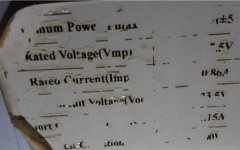 20200508_194350.jpg22.2 KB · Views: 7,004
20200508_194350.jpg22.2 KB · Views: 7,004 -
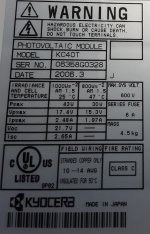 20200508_194323.jpg79.6 KB · Views: 7,004
20200508_194323.jpg79.6 KB · Views: 7,004 -
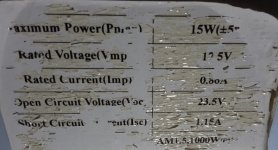 20200508_194359.jpg36.4 KB · Views: 7,004
20200508_194359.jpg36.4 KB · Views: 7,004 -
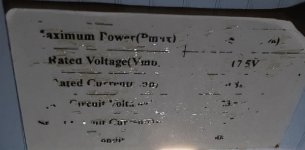 20200508_194407.jpg20.4 KB · Views: 7,004
20200508_194407.jpg20.4 KB · Views: 7,004 -
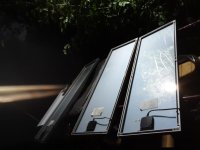 20200508_194411.jpg29.4 KB · Views: 7,004
20200508_194411.jpg29.4 KB · Views: 7,004


